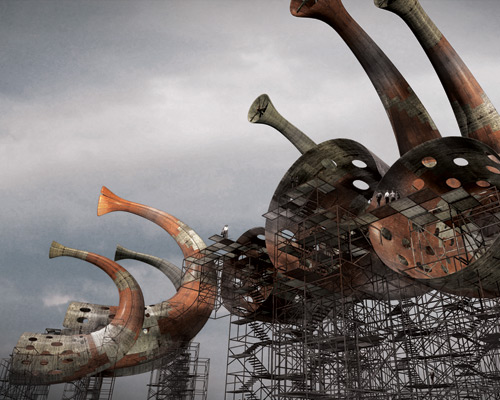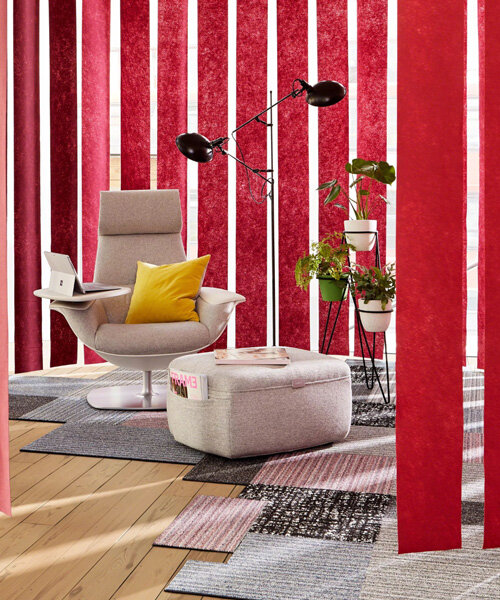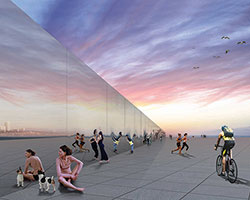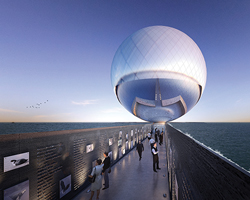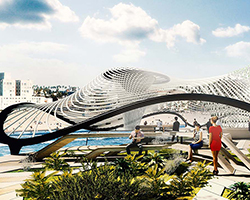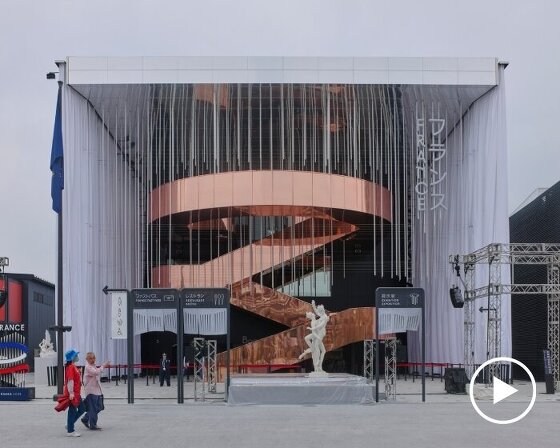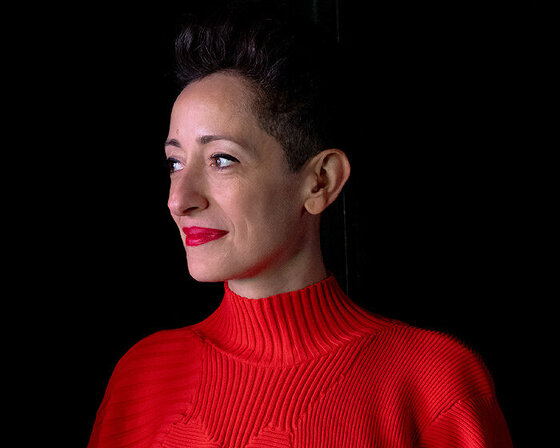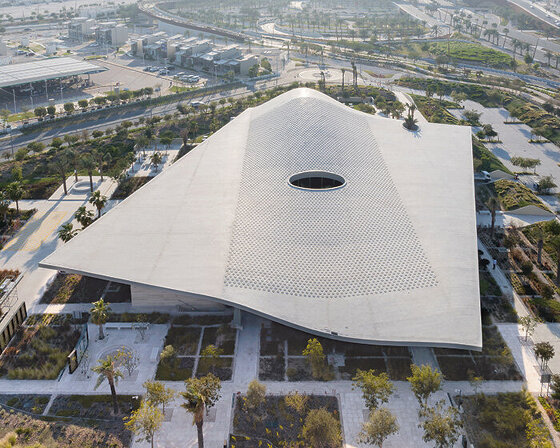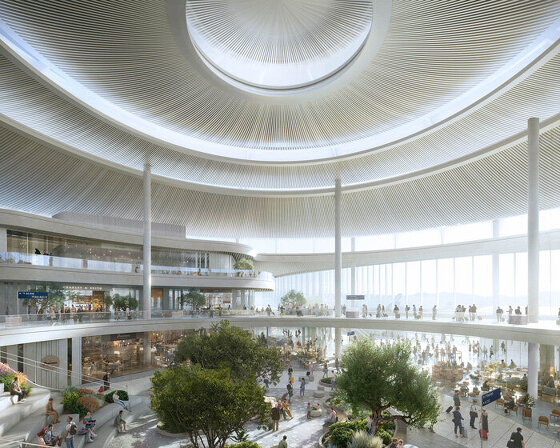horn structures produce wind-generated sounds in denmark for LAGI 2014
image by laura mesa arango + rafael sanchez herrera
by looking to denmark’s long reliance on wind force for the country’s development over time, designers laura mesa arango and rafael sanchez herrera have conceived their proposal – titled ‘the sound of denmark’ – for the 2014 edition of land art generator initiative. located on copenhagen’s harbor edge, the project is comprised of 12 viking horn forms which function as ‘compact wind acceleration turbines’ to both generate energy and also produce sounds in co-operation with the structure’s shape. the ‘sound landscape’ allows for public occupation, serving as a place for engagement with environmental forces – wind and sound – while potentially prompting reflection on its impact on society in past, current, and possible future realities.

the horns are occupiable, providing an intimate experience of wind and sound forces
image by laura mesa arango + rafael sanchez herrera
with a projected annual energy capacity of 117 MWh, the compact wind acceleration turbines function to concentrate wind force and increase its velocity as it passes through each curved tubular form. this air movement interacts with the horn’s shape, which includes an arrangement of holes on the lower portion, to create particular sounds. specifically, these tones correspond, ‘with letters of the alphabet that refer to natural forces’, including ‘S-U-N’, ‘W-A-T-E-R’, and ‘I-C-E’. each instrument is elevated above the ground plane by an open scaffolding framework, and accessed by intermittent staircases and platforms.
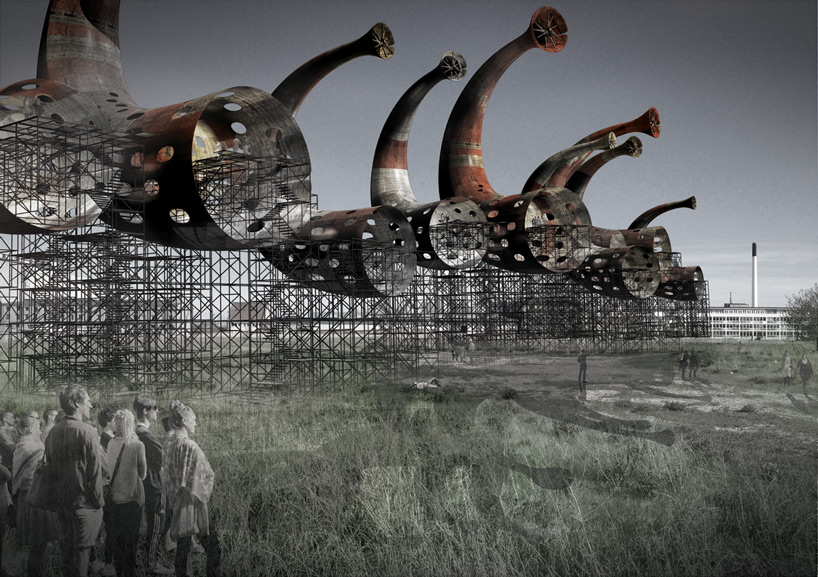
each of the 12 instruments is elevated by an open scaffolding framework
image by laura mesa arango + rafael sanchez herrera
the viking horn structures are organized in groups of three, resulting in four clusters along the waterfront that each include a large, medium, and small form. the construction of the horn is imagined to utilize wood and metal materials from decommissioned ships. this strategy serves to both reduce environmental costs while creating a physical relationship between the structures and the region’s maritime and industrial legacy.
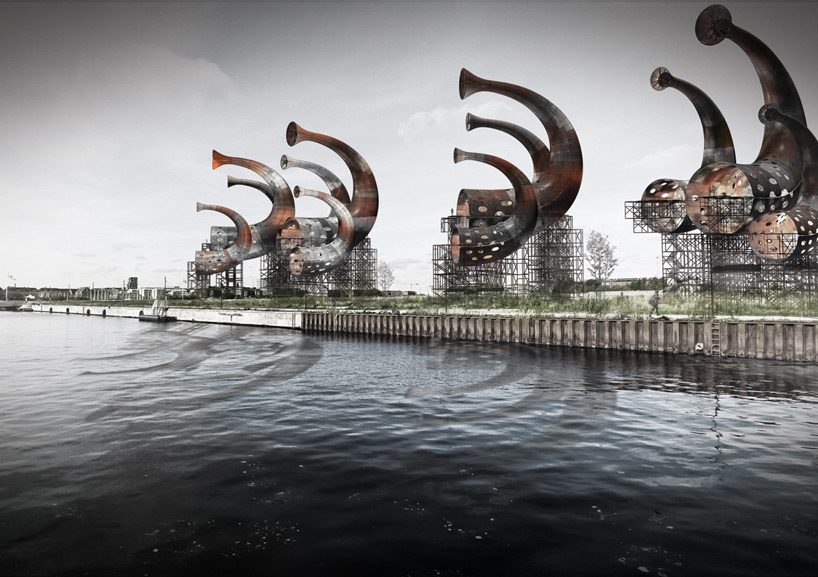
the complex is arranged in clusters of three, with a small, medium, and large horn each
image by laura mesa arango + rafael sanchez herrera
through the creation of a ‘sound landscape’, the designers seek to celebrate wind – a force which is significant to the region, as it assisted viking travel centuries ago and currently provides renewable energy.
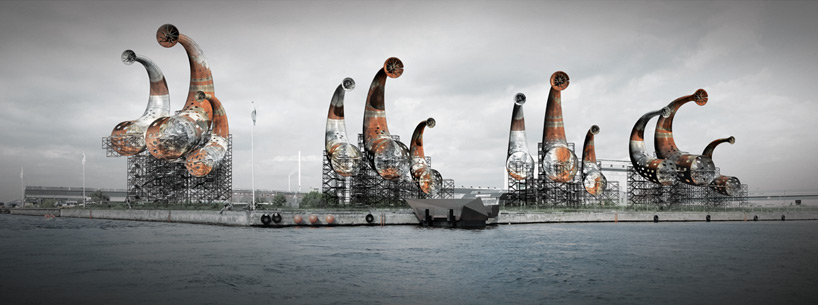
turbines on the upper opening of the horn accelerate wind speed as it passes through the tubular form
image by laura mesa arango + rafael sanchez herrera
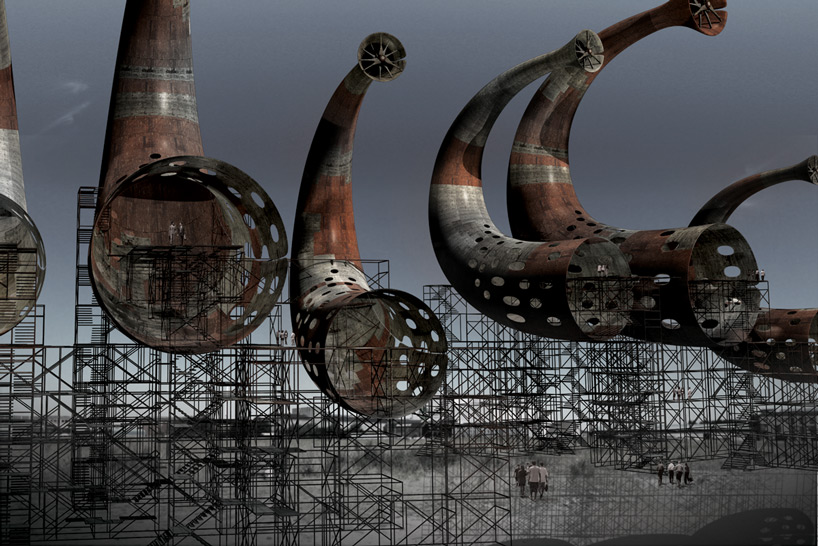
holes on the lower portion of the shells produce different resulting tones
image by laura mesa arango + rafael sanchez herrera
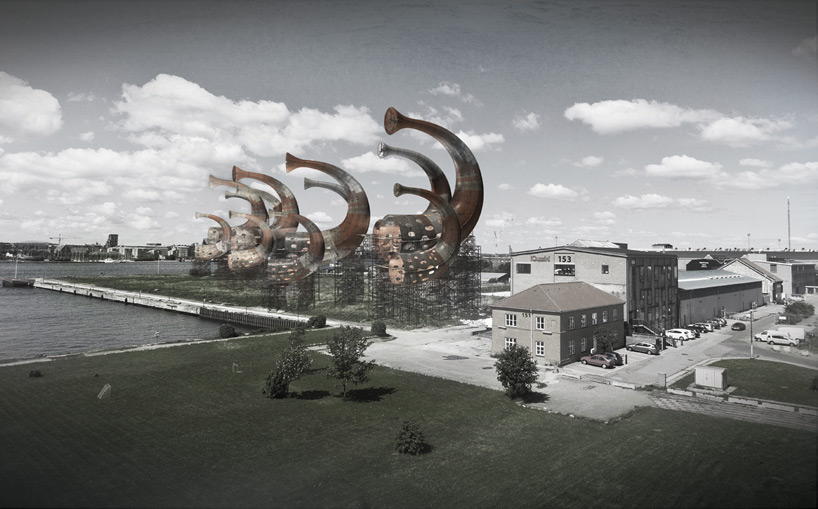
image by laura mesa arango + rafael sanchez herrera

image by laura mesa arango + rafael sanchez herrera
project info:
artists: laura mesa arango, rafael sanchez herrera
artist location: vienna, austria
energy technologies: compact wind acceleration turbines
annual capacity: 117 MWh
